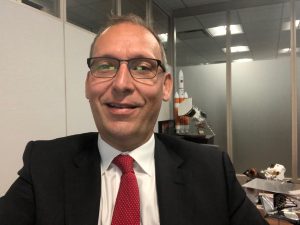
A New Perspective


As the COVID-19 pandemic began to rage last year, I thought about how NASA could marshal its resources to help benefit people worldwide. We know that Earth observations provide us with a satellite view of our home planet and offer a unique perspective on any number of macro changes happening here on Earth. So together with the European Space Agency (ESA) and the Japan Aerospace Exploration Agency (JAXA), we combined resources to strengthen our understanding of the effects of the global pandemic. As a result, we unveiled the Earth Observing Dashboard in June 2020. I am really proud of this effort because the dashboard offers the public access to an array of COVID-related Earth observation data captured by the three space agencies. It allows anyone to see, from a satellite-view, the effects that COVID-19 is having on our economies, our environment, shipping patterns and more around the globe.
June 2021 marks the one-year anniversary of the dashboard’s creation. We thought a great way to commemorate the occasion would be to host a global hackathon and invite participants to tackle challenges related to the intriguing data contained in the dashboard. If you’ve ever been curious about how people’s shopping behaviors changed during COVID, or how the lockdown orders affected carbon dioxide levels or water quality, check out the dashboard. If you’re interested in solving challenges using this data or helping to improve the dashboard itself, we would welcome your participation in the Earth Observation Dashboard Hackathon from June 23-29, 2021.
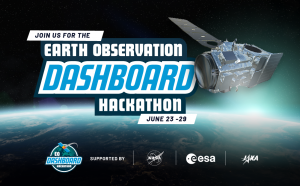
To give you some examples, the dashboard includes a nighttime lights indicator derived from the Suomi-NPP Visible Infrared Imaging Radiometer Suite (VIIRS), which shows how the pandemic lockdown measures affected businesses, highways, and nightlife by revealing changes in light activity at night by tracking changes in energy use, migration and transportation activity patterns.
Second, when the pandemic impacted the ability of governments to perform in-person field surveys to monitor the progress of food crops, Earth observation-based data used for the Global Agricultural Monitoring Initiative (GEOGLAM) Global Crop Monitor provided evidence and reassurance that the food supply was adequate from afar.
Also, some parts of the world are currently experiencing lockdowns due to the second wave of COVID-19. The dashboard shows human activity slowdown (SAR Proxy maps) and a similar environmental response (NO2) to the second lockdown as the first one. Data collected and carefully curated for these waves of COVID-19 periods could provide further insights into environmental responses and economic impacts.
As countries continue to battle COVID-19, I am proud that the dashboard can be a tool that enables people and governments to better understand how the pandemic is affecting our world. I hope that seeing the impacts of COVID from such a vantage point can help spur innovation and spark new ideas. I hope you will join us for the hackathon!
More so than ever, our Science Mission Directorate (SMD) websites are the front-door to our worldwide community of enthusiasts and learners. Upon an in-depth analysis of our web presence, I believe it is time for us to elevate the way we communicate and enhance the breadth of our audiences using a focused approach on great content, and best-in-class optimization techniques. As will all of our communication activities, we will do this as one team, and driven by the desire to enhance the impact and inspiration of our science throughout. This is a core-element of our NASA Science strategy, which focuses deliberately on inspiration and communication.
Soon after being established, NASA was directed by the U.S. Congress to “provide for the widest practicable and appropriate dissemination of information concerning its activities and the results thereof.” NASA’s Science Mission Directorate (SMD) has an extensive public web presence, from the flagship website https://science.nasa.gov to mission-specific sites to topic-based websites. As sources from which people get their information change, NASA Science must continue to ensure its message is easy to find, available to all, leveraged, and managed per federal and Agency policies and procedures.
For NASA Science, we deeply care about communicating in audience-appropriate language and enabling science enthusiasts and learners of all ages to actively participate in science. Among the several types of opportunities for such engagements are exciting research, student collaborations, challenges, citizen science, science activation projects, and others. Disseminating such information is key and with the expectations for digital content being raised every more, NASA Science must embrace these changes and modernize our web presence to reach the widest possible audience and share our message.
Recently, our social media presence went through a major refresh, with a more focused and aligned effort that resulted in higher followership for these accounts and broader engagement. It has been a great success thus far with enhanced visibility for our project, new audiences we gained as a result of it, and larger user engagements per post than before. And we are still learning to improve and elevate the game. Now, we plan to do the same for our web presence.
As part of an agency-wide modernization and consolidation of NASA websites, SMD will unify its public engagement websites under a newly designed and freshly built https://science.nasa.gov, consistent with social themes. Sites in scope of this effort include those with the extension *.nasa.gov in their URL which are mostly funded by SMD. Types of websites include public engagement deep dive sites, programmatic sites, and science sites for kids. Websites that are not part of this current consolidation include those sites whose main purpose is to serve data to the science community (we will address these at a later date), sites that are hosted at partner institutions (i.e. hubblesite.org), and sites where SMD is just one of the funding sources. This strategic approach will enhance user experience and allow NASA Science and its broad impact on society to be seen and appreciated by more. The main goals will be to:
Rest assured, there will be flexibility built into this process. In particular, we want to encourage content owners to pitch new tools, content, etc., and build them out on science.nasa.gov, as appropriate. We need all of our experts and our engaged champions to help shape the end state.
Soon, you will see these efforts taking shape across our websites – we do not want to drag this out. We recognize, of course, that this process will take significant effort and will take many months to complete. As we proceed, remember that having great content is an important starting point of a great site. However, equally important is ensuring people can find our content.
As mentioned before, this SMD-wide effort has one sole purpose – we all deeply care about communicating the value and excitement of science, and to do so by setting a new standard of excellence for science websites. And we can only be successful achieving this audacious goal by working together as one team!
Thanks for being part of this worthwhile effort!
It happened again this past weekend. I was excited about my refreshing spring run, the bird songs, the beautiful flowers, and I remembered how much she loves spring. I wanted to tell her I am thinking of her. I was reaching for the phone. And then I suddenly remembered that my mother is no longer with us.
I still read her loving messages she sent me from her iPad – a skill she insisted she would never learn, then struggled with, and eventually mastered. This is how she watched me when I was on TV. This is how she read most news about me and the whole word.
She had a whole book of clippings of news articles about me – I never knew that until the very end. And it surprised me because I had sensed little interest in my work before. Obviously, I had been wrong.
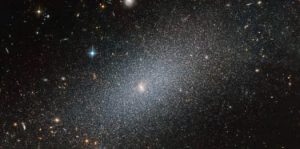
I have been thinking a lot about the 500,000+ US families and millions worldwide and the tens of millions of children and friends whose lives will not be the same anymore, changed by COVID. I think about the grandparent who left prematurely, the mothers who will never be grandmothers, the Holocaust survivors whose stories died with them, those who were freedom fighters, the courageous immigrants who were finally brought down.
I received my second vaccine a few days ago. I am deeply grateful for the scientists and those who helped produce this vaccine in record time. I am happy and hopeful that we can soon wake up from this nightmare we have been in for over a year.
And when this is part of the past, let’s not forget that the scars from this will be a reality for millions of families for years. They too will have gaping holes in their lives they struggle with. And they too will need time to heal and learn what it means to have fewer people on Earth who truly love them. They too will need help.
My condolences and thoughts to all of you who lost loved ones this past year! May you feel the love and friendship in your lives and may you have the courage to ask for help when needed!
P.S.: Check out this 80s song I re-discovered recently. I really needed help when it came out in as I feared I had lost my family forever, and it therefore spoke to me then. It again speaks to me today as we all need to learn to ask for help and learn to listen to others when they need help. Most don’t do it as beautifully as Tina Turner: https://youtu.be/4cro7kZKG2c
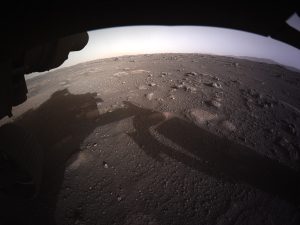
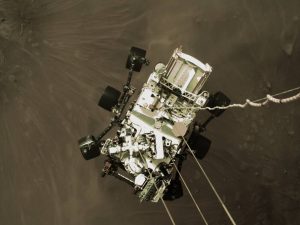
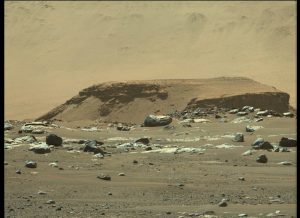
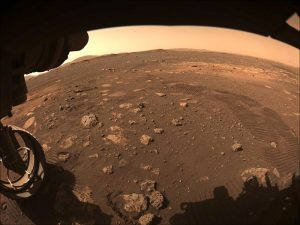

I am happy to announce that I have made a selection to permanently fill the Science Mission Directorate’s position of Deputy Associate Administrator for Exploration (DAAX). Dr. Joel Kearns will join us on February 1 to begin working with us and our stakeholders in this critical role at NASA Headquarters.
I would like to give my appreciation and thanks to Dr. Dave Burns, who has done an excellent job in keeping the Exploration Science Strategy and Integration Office (ESSIO) portfolio moving forward by developing and strengthening partnerships, strategies and activities for robotic and human exploration at the moon and beyond. Most notably, Dave has been instrumental in leading the efforts managing the Commercial Lunar and Payload Services initiative. Dave and the ESSIO team have been absolutely critical in the burgeoning lunar economy that will deliver payloads to the lunar surface at a cadence of approximately two per year beginning in 2021.
Joel has more than 32 years of experience in leadership roles at multiple NASA centers and in private industry. He is currently the director of Facilities, Test and Manufacturing at NASA’s Glenn Research Center in Cleveland. He leads efforts that encompass facility infrastructure, aerospace testing, flight research aircraft, on-site manufacturing and environmental management.
He previously served as the deputy director of GRC’s Space Flight Systems Directorate, providing executive direction of projects assigned to Glenn in human exploration and operations, space science and space technology
Joel also previously served as an executive at NASA Headquarters in human spaceflight, and at both the Ames Research Center in California and Marshall Space Flight Center in Huntsville, where he worked on programs as varied as the space shuttle and SOFIA. He has also held positions in industry.
Joel was awarded the U.S. Government’s Presidential Rank of Meritorious Senior Executive in 2009. He is also an inventor on four patents for single crystal growth technology! We look forward to his insight and expertise as we move ahead with the many facets of critical work to return to the lunar surface.
We all know what a tough year it’s been. At this year’s meeting of the American Geophysical Union (AGU), however, it’s been great to see so much hope delivered by science, to see how much discovery and enthusiasm for exploring our world and our universe continue no matter what. The AGU always provides thought provoking presentations and discussions. But this year in particular, it demonstrates the power of science to bring us together as a community to explore unique questions and look at our planet and the cosmos through fresh eyes.
Our world’s quarantine for much of the year has resulted in some dramatic observations from our Earth orbiting satellites, and those findings have been on display with posters and presentations and many dialogues at AGU.
One thing I’m particularly proud of is a partnership in response to the global pandemic by NASA, ESA (European Space Agency), and JAXA (Japan Aerospace Exploration Agency), who joined forces this summer to use the collective scientific power of their Earth-observing satellite data to document planet-wide changes in the environment and human society. And we made the wealth of our agencies’ collective information available at the touch of a finger, free and open to all.
In an unprecedented collaboration, the three space agencies created the joint COVID-19 Earth Observation Dashboard, which integrates multiple satellite data records with analytical tools to allow user-friendly tracking of changes in air and water quality, climate change, economic activity, and agriculture.
This tri-agency data resource gives the public and policymakers a unique tool to probe the short-term and long-term impacts of pandemic-related restrictions implemented around the world. The dashboard will continue to grow with new observations added over the coming months as the global economy gradually reopens.
And now at AGU, we three agencies have signed a declaration to continue this valuable global resource through June of next year. Below, I’ve pasted the text of our shared declaration, read at and AGU at the panel ‘Science in the time of COVID-19,’ but I want to leave you with the words of my friend, Dr. Michael Freilich, about why we do things such as the COVID-19 Earth observation dashboard.
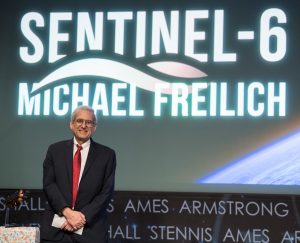
Mike said, “Earth system science is bigger than any particular agency. It’s bigger than any single nation. It’s bigger than any single continent. And I surely hope, because humanity requires it, that we make some significant progress in understanding it.”
With that strong message from an inspirational leader, here’s the declaration:
Joint Declaration at the American Geophysical Union, December 2020, by NASA, ESA and JAXA
Today NASA, ESA, and JAXA commit to continue through June 2021 to advance their joint work in understanding the environmental changes in air quality, greenhouse gases, water quality, agriculture, and economic activity due to COVID-19, an effort that began in April 2020 with the establishment of a tri-agency Earth observation dashboard. This decision continues the unprecedented collaboration, and open sharing of data, modern indicator analysis, open source analytical tools and scientific knowledge and expertise involving our agency experts to integrate agency datasets to observe, analyze, and communicate COVID-19 related environmental changes to the public and to policymakers around the world. Over the next 6 months, the agencies will continue to jointly advance our understanding of the effects of COVID-19 on the Earth from the unique perspective of space while making the data openly available through the joint dashboard.
Over the next six months, additional data will be collected to further enhance the indicators and to allow the study of more regions and hot spot areas impacted by COVID-19. Socioeconomic and other field experts will be invited to collaborate and accelerate the analysis and understanding of the impacts enabled by the open dashboard datasets.
In addition, NASA, ESA, and JAXA will welcome other space agencies and organizations sharing similar values to join this initiative and contribute with their data and expertise to further expand this international Earth observation dashboard.
Thomas Zurbuchen, Associate Administrator Science Mission Directorate at NASA
Josef Aschbacher, Director, Earth Observation Programmes at ESA
Koji Terada, Vice President and Director General, Space Technology Directorate I at JAXA
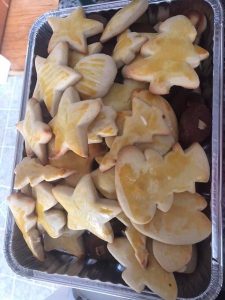


Today marks an exciting and historic event as precious samples from asteroid Ryugu have been brought to Earth by the Japan Aerospace Exploration Agency’s (JAXA) Hayabusa2 mission. This is an extremely challenging endeavor and we commend and congratulate Japan on being not only the first nation that has been able to carry out a successful asteroid retrieval mission, but to now have done so for the second time!
We are excited about our collaboration between JAXA’s Hayabusa2 mission and NASA’s asteroid sample return mission – OSIRIS-REx, which extracted a sample from near-Earth asteroid Bennu on Oct. 20. Our mutually beneficial partnership with Japan allows us to share samples from NASA’s mission at Bennu and receive a portion of JAXA’s sample from Ryugu. Together, we will gain a better understanding of the origins of our solar system, and the source of water and organic molecules that could have seeded life on Earth.

Our model of sharing samples is a testament to the unprecedented partnership For the U.S. and Japan have built over half a century in aeronautics research and human and robotic space exploration. Together, our two spacecraft have traveled millions of miles to touch the ancient solar system. With Hayabusa2’s return today, and OSIRIS-REx’s return in less than three years, we will be able to share the science and insights we gain from these invaluable samples with all of humanity.
The fact that humans can launch a spacecraft from Earth, have it rendezvous so accurately with a small target and delicately touch the surface to collect a sample is just incredible and shows the tenacity of the human spirit. Missions like Hayabusa2 and OSIRIS-REx give us hope. They inspire us to persevere through the many challenges faced with such challenging endeavors, and they teach us the power of working together – not as one nation or as one agency, but together as humans who share a home on this pale blue dot.

And what’s most exciting is that this is just the beginning. The return of Hayabusa-2 is the start of a decade of trailblazing missions to explore the Moon together, as part of Artemis, and to return samples from distant bodies, including JAXA’s upcoming Martian Moons eXploration mission and NASA’s Mars Sample Return mission. Our collaboration with Japan will provide invaluable science and critical knowledge for expanding humanity’s presence deeper into the solar system.
Congratulations again to JAXA and its partners, the French National Centre for Space Studies (CNES), the German Aerospace Center (DLR), and the Government of Australia including the Australian Space Agency), and to the Japanese people. This is a great day for science and exploration.